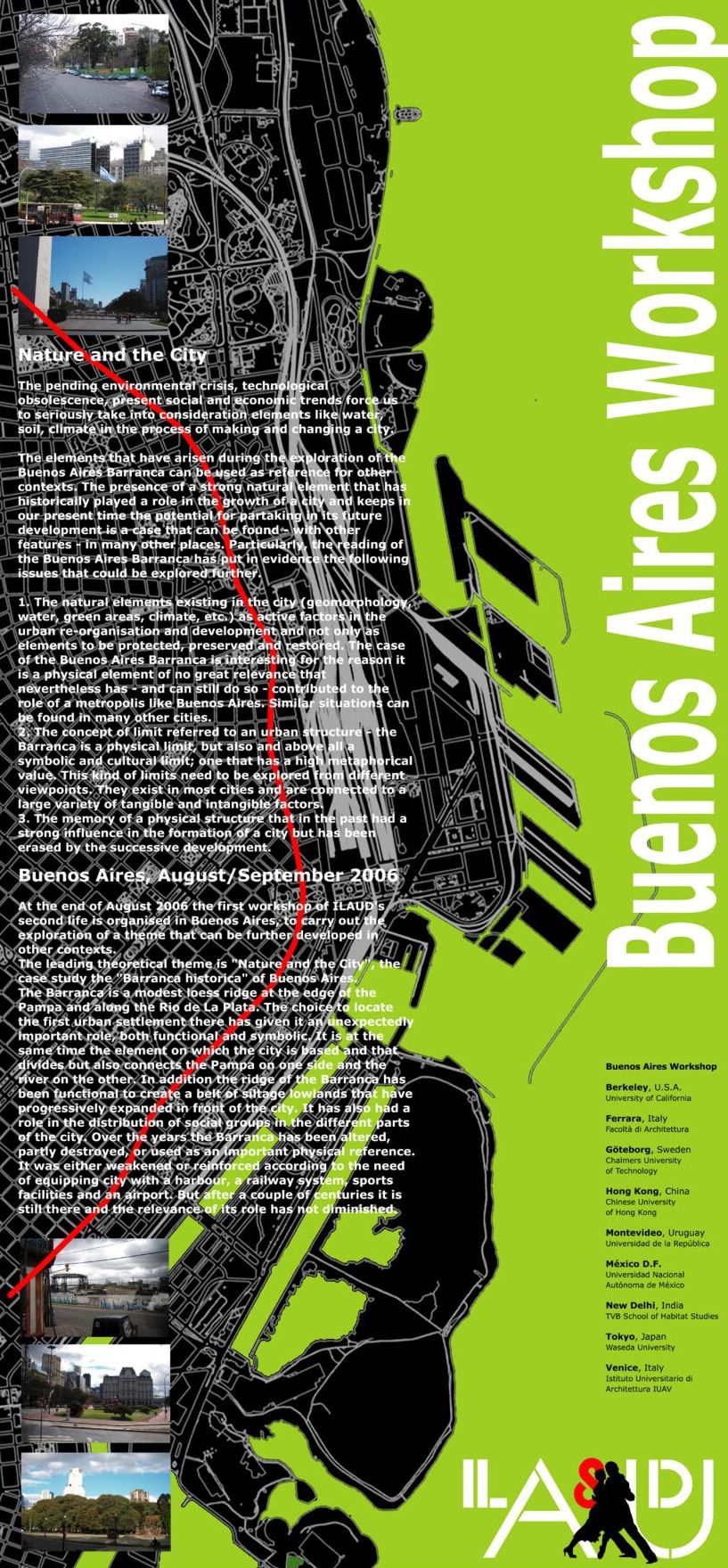The leading theoretical theme of the workshop was “Nature and the City”, the case study the “Barranca historica” of Buenos Aires. The Barranca is a modest loess ridge at the edge of the Pampa and along the Rio de La Plata. The choice to locate the first urban settlement there has given it an unexpectedly important role, both functional and symbolic. It is at the same time the element on which the city is based and that divides but also connects the Pampa on one side and the river on the other. In addition the ridge of the Barranca has been functional to create a belt of siltage lowlands that have progressively expanded in front of the city. It has also had a role in the distribution of social groups in the different parts of the city. Over the years the Barranca has been altered, partly destroyed, or used as an important physical reference. It was either weakened or reinforced according to the need of equipping city with a harbour, a railway system, sports facilities and an airport. But after a couple of centuries it is still there and the relevance of its role has not diminished.
The pending environmental crisis, technological obsolescence, present social and economic trends force us to seriously take into consideration elements like water, soil, climate in the process of making and changing a city.
The elements that have arisen during the exploration of the Buenos Aires Barranca can be used as reference for other contexts. The presence of a strong natural element that has historically played a role in the growth of a city and keeps in our present time the potential for partaking in its future development is a case that can be found with other features in many other places. Particularly, the reading of the Buenos Aires Barranca has put in evidence the following issues that could be explored further.
1.The natural elements existing in the city (geomorphology, water, green areas, climate, etc.) as active factors in the urban re-organisation and development and not only as elements to be protected, preserved and restored. The case of the Buenos Aires Barranca is interesting for the reason it is a physical element of no great relevance that nevertheless has – and can still do so – contributed to the role of a metropolis like Buenos Aires. Similar situations can be found in many other cities.
2.The concept of limit referred to an urban structure – the Barranca is a physical limit, but also and above all a symbolic and cultural limit; one that has a high metaphorical value. This kind of limits need to be explored from different viewpoints. They exist in most cities and are connected to a large variety of tangible and intangible factors.
3.The memory of a physical structure that in the past had a strong influence in the formation of a city but has been erased by the successive development.
The Laboratory was held in cooperation with the Gobierno de la Ciudad de Buenos Aires.
